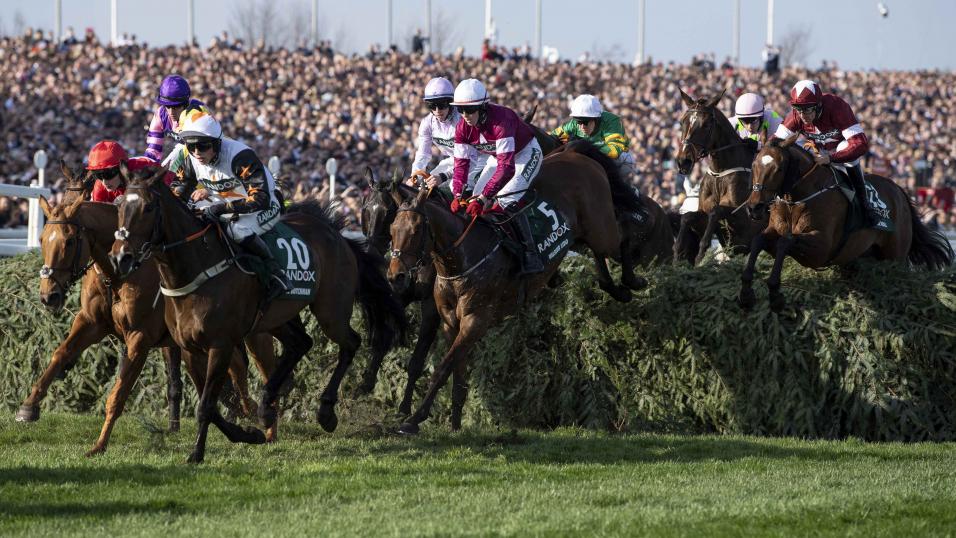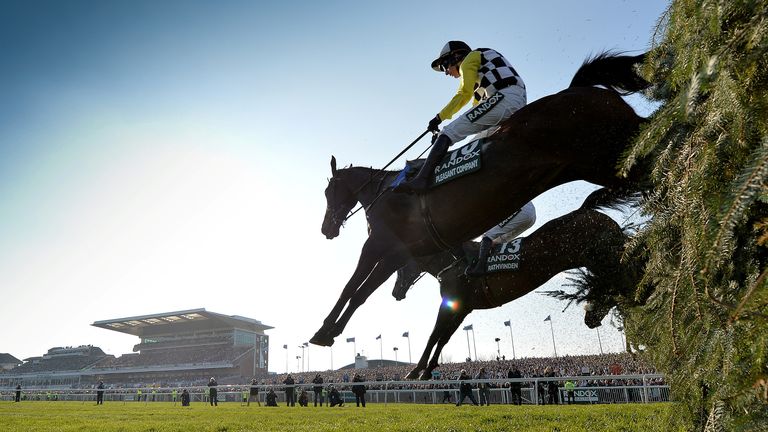Grand National Handicap
- Grand National Handicap Association
- Grand Canyon National Park Handicap Accessible
- Grand National Trial Handicap Chase
- Grand National Handicap Placard

The Grand National is the premier race on the jump racing calendar that has continued to gather huge interest year in year out. With the race offering a prize fund of £1 million, it now means it is the most valuable jump race in Europe, and is targeted by many connections of top staying chasers. The race is regarded as the ultimate test of horse and rider which is one of the key reasons behind its popularity due to the stunning spectacle it provides. The race has been won by a list of champions whether it be the mighty five time Cheltenham Gold Cup winner Golden Miller or three time Grand National winning legend Red Rum. Both horses live long in the memory and have played a key part in making the National what it is today. Looking ahead to the 2018 edition of the race, many punters will be looking for the best Grand National odds online as Betfair currently make the Irish-trained Total Recall their 10/1 favourite.
Grand National Handicap Association
One factor that has continued to gather a lot of attention in regard to the Grand National is how the weights are made. In the past many horses were having to carry huge amounts of weight and giving several stone away to other competitors. This therefore made it an almost impossible task for the classier higher-rated horses to win the race. The great Red Rum is the last horse to win the race off top weight (12 stone) back in 1974. However changes were clearly needing to be made and in 2001 this came in to fruition resulting in the positive change the National needed. Phil Smith (Head Handicapper) stated that “Looking back over the history of the race, we realised that the highly weighted horses had a moderate record, so we thought something needed to be done to try to not overburden the better horses”.
(RED RUM GOES PAST THE WINNING POST FOLLOWING HIS 1974 GRAND NATIONAL VICTORY OFF 12 STONE)
Source: http://www.bbc.co.uk/news/uk-scotland-glasgow-west-39528083
Established in 1939, the Keeneland Library is a research/reference library that serves as one of the world’s largest repositories of information related to the Thoroughbred, housing nearly 20,000. .handicap with the classier horses having far more success and one horse that is likely to enter many people’s top tips for Grand National is Blaklion.
The new system of handicapping the race meant the field was compressed thus meaning there wasn’t such a big disparity between the weights that the top and lower rated horses carry. This results in the field being made up of far classier, higher-rated horses from top to bottom. An example of this is back in 1999 before the change; the lowest rated horse in the race had an official rating of 110. Fast forward to the 2011 running and the lowest rated horse was Golden Kite who had a rating of 135. This shows that the quality of the field improved by 25lbs in those 11 years and continues to do so each year with the bottom weight in the 2017 running having a mark of 139.
With the Grand National being all about the extreme test giving away huge amounts of weight could only been done on a rare occasion which is why this was such a positive change for the race and sport as a whole. Now there is only a few pounds separating the handicap resulting in a far more level playing field and this means the race becomes a far more attractive proposition for connections than it has been in the past.


Grand Canyon National Park Handicap Accessible
The change can clearly be seen in the results of the race over the past 10 years for example.Five of the 10 winners have carried 11 stone or more to victory and far more horses have been competitive off near top weight. The 2009 winner Mon Mome won the race off 11 stone by an incredible 12 lengths and also at odds of 100/1. Don’t Push It then followed up the year after off 11 stone 5lb for the famous team of JP McManus, Jonjo O’Neill and Tony McCoy: this was also the one and only time the great McCoy won the famous race.
Ballabriggs was another winner off 11 stone in 2011 for the famous Grand National owner Trevor Hemmings. The following year Neptune Collonges landed the National for trainer Paul Nicholls off a mammoth weight of 11 stone 6lb. The final horse in the last decade to enter this bracket was of course the 2015 winner Many Clouds. Many Clouds won the race of a huge weight off 11 stone 9lb at the age of just 8, in one of the fastest times recorded. This was also the biggest weight carried to victory since Red Rum’s second success back in 1974 off 12 stone. Looking ahead to this year’s race many punters will be focusing on the top of the handicap with the classier horses having far more success and one horse that is likely to enter many people’s top tips for Grand National is Blaklion. The Nigel Twiston- Davies trained horse has had this race as his target all year following a close call in the 2017 running and may just provide another victory for the dualGrand National-winning trainer.
Surely the worlds’ most watched and famous of British National Hunt horse race ever. The Grand National, founded in 1839, although some say 1836, this race takes place in April every year at Aintree in Liverpool, over a distance of 7141 metres,(about 4.5 miles) with some 30 fences to be jumped, and is believed to be the ultimate test of rider and horse. It is the richest steeple chase event, carrying a purse of one million pounds.
The history of this race is chequered with unbelievables, from 100-1 winners on three different occasions to only one horse finishing the race when, in 1928 jockey William Dutton on his horse, Tipperary Tim came home after 41 of the 42 entries fell at various jumps. Some of the jumps in this race have become famous in their own right and have been given names such as ‘The Chair’, ‘Canal Turn’ and Becher’s Brook, apparently named after a Captain Martin Beecher who fell there in the first running of the race and took shelter in the small river,(brook), whilst the rest of the race contestants jumped over him. During the First World War, Aintree was taken over by the military, so the race was moved to Gatwick Race course for three years.

During the 1950s’ another first in the history of this race occurred when Irish trainer Vincent O’Brien trained the winning horses in three consecutive years, of 1953, 54 and 55. It took another twenty years and a horse of exceptional qualities to become a three time winner of this race. Red Rum won this gruelling contest in 1973, 1974 and 1977 and remains the only horse ever to have achieved this honour. Originally sold for just four hundred and twenty pounds and eventually landing up with trainer Ginger McCain he was found to be suffering from an inflammatory bone disorder which McCain treated by having the horse run in sea water.
Grand National Trial Handicap Chase
Originally the land on which Aintreee stands was owned by the 2nd Earl of Sefton, and over the ages has changed hands to various owners, or organizations. Today it is managed by the British Jockey Club.
Grand National Handicap Placard
Today this horse racing spectacle is watched by over 600 million viewers in 140 countries.